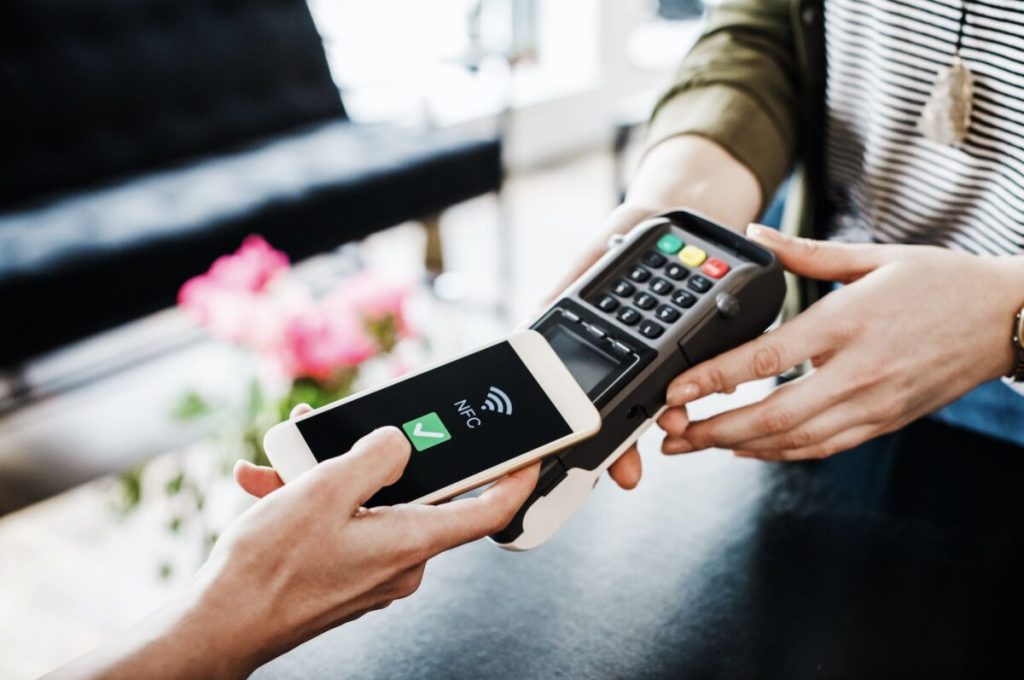As smartphones become ubiquitous and fintech rapidly advances, mobile payments are sparking a global revolution in payment methods. In the U.S., mobile payments are gradually becoming an essential part of daily life. While adoption rates are still behind countries like China, the development momentum is undeniable. The rise of mobile payment applications such as Apple Pay, Google Pay, and Samsung Pay is reshaping U.S. consumer payment habits and paving the way for future financial innovation.
1. The Current State of Mobile Payments in the U.S.
1) Major Mobile Payment Applications
- Apple Pay: Launched by Apple, Apple Pay has rapidly captured the market, thanks to its vast iPhone user base. Users can store credit or debit card information on their iPhone or Apple Watch and make transactions through NFC (Near Field Communication) technology at supported payment terminals.
- Google Pay: Google’s mobile payment platform supports Android users and not only enables NFC payments but also integrates online payments, money transfers, and bill management.
- Samsung Pay: Samsung’s mobile payment service supports both NFC technology and traditional Magnetic Secure Transmission (MST), allowing it to be used with a broader range of terminals.
2) Technological Foundation: NFC and Security
- NFC Technology: NFC is at the heart of mobile payments, allowing users to complete transactions by simply bringing their phone near an NFC-enabled terminal. It’s fast and secure.
- Security: Mobile payment applications use various security measures, such as tokenization (transforming card details into unique digital tokens) to prevent information leaks. Additionally, biometric authentication (e.g., fingerprint and facial recognition) enhances security.
3) Use Cases
The scope of mobile payment usage in the U.S. is expanding, including retail stores, restaurants, public transportation, and online shopping. For example, mobile payments have become common at large retail chains like Starbucks and Walmart.

2. Advantages of Mobile Payments
1) Convenience
The primary advantage of mobile payments is convenience. Users don’t need to carry cash or cards—just a smartphone to complete transactions. This contactless payment method is especially suited for the fast-paced modern lifestyle.
2) Security
Compared to traditional magnetic stripe cards, mobile payments use advanced security technologies like encryption, tokenization, and biometric authentication, significantly reducing the risks of fraud and data breaches.
3) Integration
Mobile payment apps not only support payment functions but also integrate other financial services, such as bill management, transfers, and reward points. For example, Google Pay allows users to track transactions and manage finances directly within the app.
4) Promoting a Cashless Society
The widespread adoption of mobile payments is accelerating the move towards a cashless society in the U.S. Cashless payments improve transaction efficiency and reduce the cost and risk associated with cash handling.
3. Challenges Facing Mobile Payments
Despite rapid growth, mobile payments in the U.S. still face challenges:
1) Merchant Support
Not all merchants support NFC technology, especially small and medium-sized businesses. The high cost of upgrading payment terminals means many merchants continue to rely on traditional magnetic stripe or chip card payments.
2) Consumer Habits
U.S. consumers have long been accustomed to using credit and debit cards, making them relatively slow to adopt mobile payments. Additionally, some users still harbor doubts about the security of mobile payments.
3) Competition and Fragmentation
The U.S. mobile payment market is dominated by several tech giants, creating fragmentation. Compatibility issues between different platforms could hinder user experience.
4) Infrastructure Limitations
Compared to Asian countries, the U.S. mobile payment infrastructure (e.g., NFC terminal coverage) still needs improvement. Furthermore, limited network coverage in some regions hinders broader adoption of mobile payments.
4. Impact of Mobile Payments on the Future
1) Catalyst for Fintech Innovation
The rise of mobile payments has accelerated fintech innovation. Technologies like blockchain, artificial intelligence, and big data are integrating with mobile payments, spawning new applications.
2) Changing Consumer Behavior
Mobile payments not only change how consumers pay but also influence their behavior. For instance, reward points and discounts offered by mobile payment apps are attracting more users.
3) Facilitating Global Payments
With the rise of mobile payments, cross-border payments are becoming more convenient. Platforms like Apple Pay and Google Pay now support multiple currencies, making it easier for international travelers.
4) Promoting Financial Inclusion
Mobile payments offer convenient financial services to people without bank accounts, contributing to financial inclusion. For instance, mobile payment platforms allow users to easily transfer money and make payments.